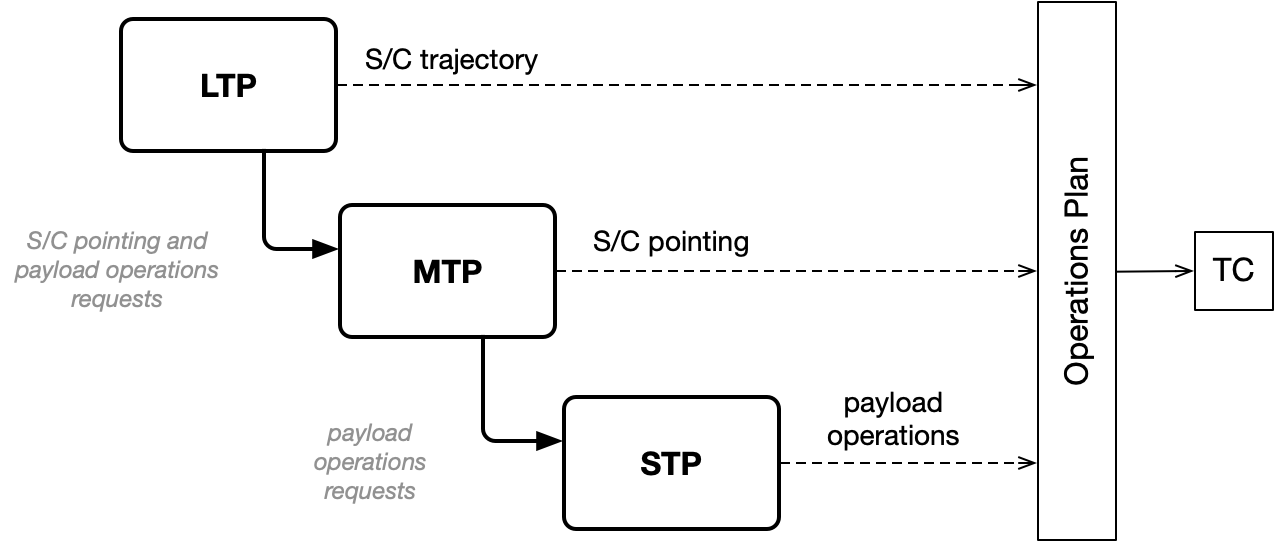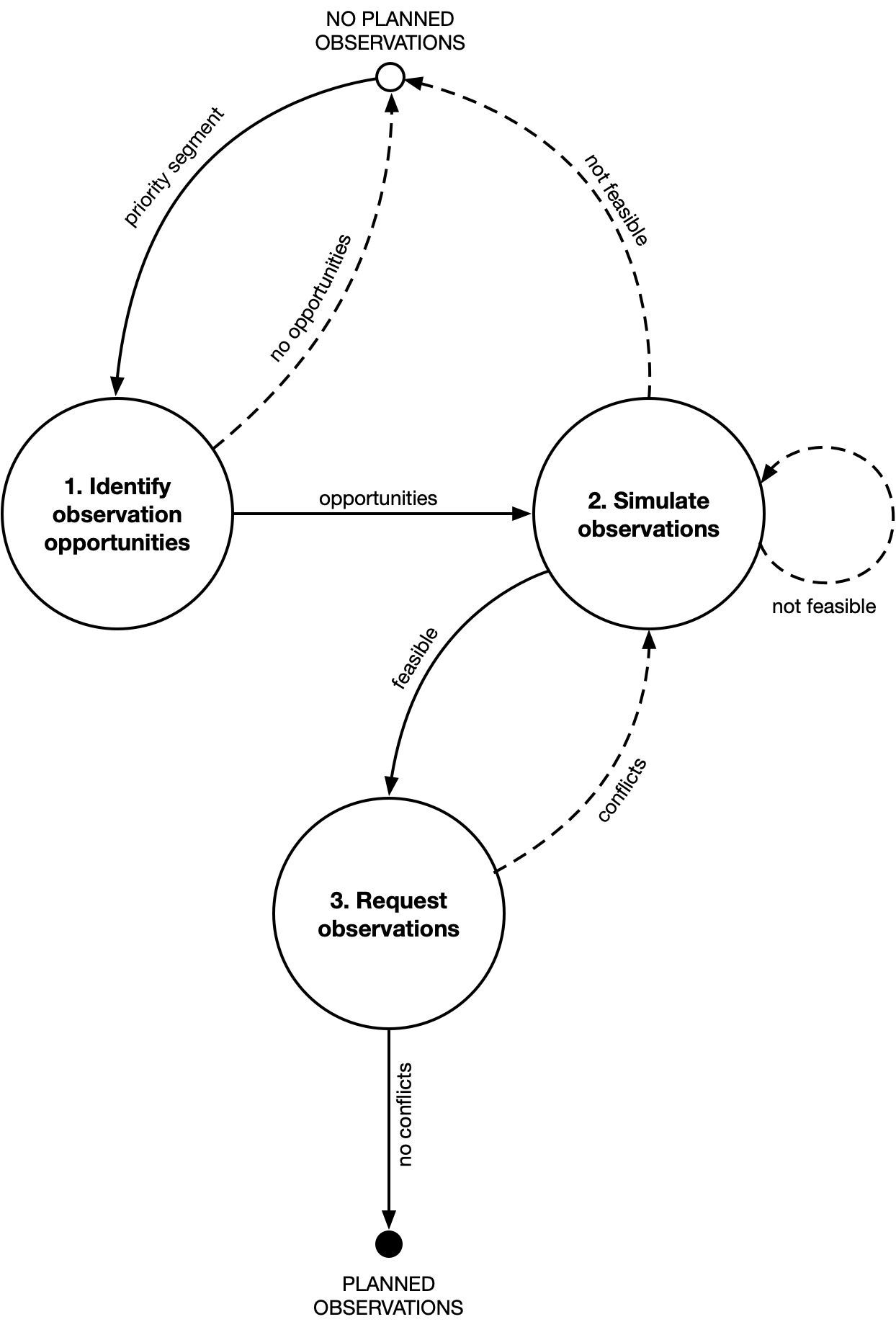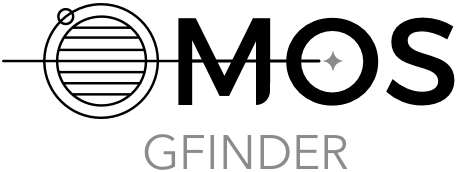MAJIS Science Operations Planning
Contents
MAJIS Science Operations Planning#
We describe aspects of the science operations planning that are most relevant to the use of the MAJIS Operations Simulator, and to the scientists and engineers involved in the current MAJIS science strategic planning, and future science operations planning activities.
Planning Concept#
During the operational phase of the mission, the science operations planning is typically divided into three cycles: Long Term Planning (LTP), Medium Term Planning (MTP) and Short Term Planning (STP). These cycles are a stepped sequential process that implements a high-level science activity plan, developed in the Long Term Plan cycle (LTP), into the final spacecraft pointing and payload operational requests.

The Long Term Planning (LTP) is done long in advance of the actual operation execution onboard. It results in a trajectory baseline and high-level science activity plan (segmentation) for a given period.
The Medium Term Planning (MTP) is done nearer the time of the actual operation execution onboard, and for a shorter given period. It results in a detailed conflict-free operations plan that takes inputs from the instrument teams and is validated by the JUICE Science Operations Centre (SOC). Instrument teams can request specific spacecraft pointing, provided that it does not conflict with scientific priorities agreed at LTP-level.
The Short Term Planning (STP) allows a final refinement of the instrument commands shortly prior to execution of the command files. Instrument teams have the opportunity to modify their instrument commanding created during the MTP. However it is not possible for them to request a different spacecraft pointing.
After STP, the final commands (TC) are delivered to the Mission Operations Center (MOC) for upload and execution in the spacecraft. After processing and analysis, downlinked data are used to inform subsequence planning activities.
Note
Level 0+ science strategic planning is done during the development phase of the mission. Similarly to the LTP outcome, it results in a high-level activity plan and segmentation that will be used as baseline/inputs to the future LTPs.
Planning Tasks and Workflow#
Planning tasks can be grouped into three broad high-level tasks applying to a given mission phase or segment: (1) identify observation opportunities, (2) simulate observations, (3) request observations. The following diagram illustrates the high-level planning workflow during MTP planning activity.

- Identify observation opportunities (Level 0+/LTP/MTP)
This task applies to Level 0+, LTP and MTP planning activities. It consists in finding time window(s) for which the geometrical condition(s) of a given MAJIS observation type are met. Note that these conditions do not depend on the spacecraft pointing.
During Level 0+/LTP:
Identified opportunity time windows, for different predicted trajectory baselines (mission scenarios), are used to request MTP-level priority science segments.
During MTP:
Identified opportunity time windows, for a given predicted trajectory baseline, are used as input to simulate observations during priority science segments. Provided that there are enough resources to operate, opportunities can also be identified for non-priority segments, but under more constrained conditions (eg: no S/C pointing requests allowed, limited data volume).
- Simulate observations (MTP/STP)
This tasks applies to MTP and STP planning activities. Based on previously identified observation opportunities, it consists in simulating the geometry, radiometry, and resources for an observation or sequence of observations. Resulting simulations data are to used to inform on the operational feasibility and scientific value of an observation, or sequence of observations.
During MTP:
Priority segment: free S/C pointing.
Non-priority segment: frozen S/C pointing, but free MAJIS scanner pointing.
During STP:
S/C pointing is frozen. However, simulations can be fine-tuned, for example to optimise MAJIS scanner pointing.
- Request observations (MTP/STP)
This tasks applies to MTP and STP planning activities. Based on simulations data, it consists in generating, validating and sending a set of instrument operational files (PTR, ITL, POR, etc…) to the JUICE SOC (using EPS-AGM and SOC interfaces).
